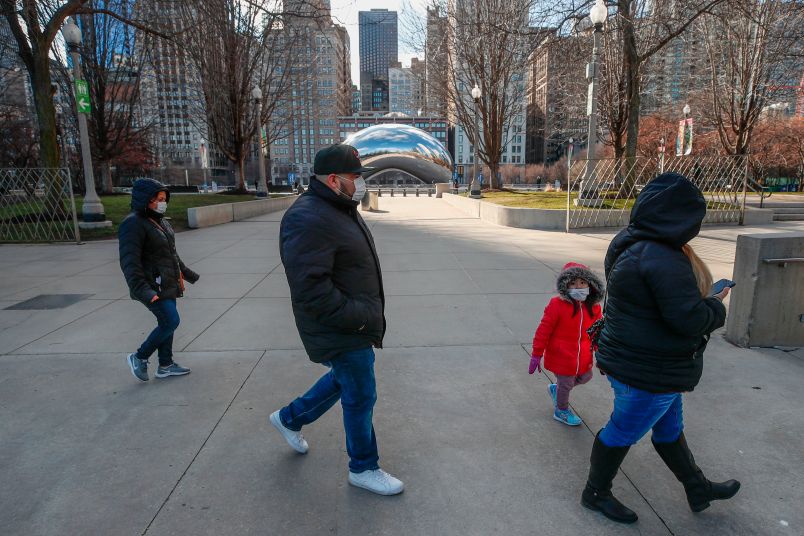Sometimes we adopt a metaphor for a big societal question that, even though we know it’s a metaphor, still significantly distorts our thinking about what we’re talking about. I’m thinking here of when we “reopen the economy”. At least in its more antic forms, President Trump himself seems to be the big driver of this catchphrase. So that may explain the confusion behind it. The economy isn’t closed and we’re not going to reopen it. Not any time soon.
Most of the economy is still functioning just like it did before. What we’ve done is ban public activities and commerce that require people to be in close proximity to each other, except for a handful of true life necessities: purchasing food, medicine, seeing doctors for a limited set of reasons, keeping public utilities running. What we’re really talking about is working in common work spaces, visiting eat-in restaurants, shopping for non-essential goods and participating in various entertainment activities.
It’s very good news that in New York we appear to be coming down off the peak of the outbreak. That’s great since the Greater New York City metro has been the center of about half the national epidemic. It confirms that social distancing really does work. But my understanding of the epidemiology of the disease is that nothing has happened that makes it any less likely that you’ll have a new outbreak as soon as the conditions for it – commingling of people – goes back to normal.
The best possible thing would be that mass serology testing demonstrated that many more people had been infected than we could have imagined – more than half of the population. Then you’d be getting toward a situation where herd immunity really would make another outbreak less likely or at least easier to manage. But the initial hints of data, like the one I mentioned earlier, make pretty clear that nothing like that is the case. If New York only has 15% to 20% of people infected, in most of the country COVID19 still constitutes a virgin soil epidemic. All we have done with all of our work is to reset the clock – absent tens of thousands of our fellow citizens – to where we were in late January or early February.
How do we approach that do-over?
One sobering reality is that it’s hard to see how reopening schools on its own wouldn’t reignite outbreaks all over the place. We still don’t know enough about the disease among children and how infectious they are. But I’ve seen no evidence or indications that we shouldn’t assume they are perfectly efficient vectors of the disease when operating at scale. Adults can social distance to an extent. It’s simply not realistic with children. Not at scale.
Next, the workplace. Putting people together in the workplace is another very obvious way to spread the disease. In major cities with public transportation that’s even more the case. In any modified mitigation strategy it is hard to see how a key part of the equation wouldn’t be remote work for all who can do it more or less easily. In many parts of the country that puts a major crimp in all the sectors of the economy which are tied to servicing people in the workplace, the most obvious of which is lunchtime restaurants and markets.
Then there’s restaurants and bars. I can’t imagine any scenario where it is responsible in any way to reopen restaurants to operate in the way they did before. Certainly that’s the case for bars. I’m not saying restaurants and bars have to stay closed for a year. That seems crazy. But certainly business as usual is out. And this leaves a vast swathe of the economy shut down.
What we’re talking about is a new normal where there’s probably a lot of mask wearing, a huge focus on hygiene, maintaining substantial physical distance where possible and a decent amount of being anxious for a lot of people. And specifically, it means finding out how many businesses and life activities can be reanimated in a substantial way while operating within those new rules. Reopening just creates a sort of binary opposition that confuses more than it clarifies.
Of course, as we discussed last week, even this seems reckless without a pretty extensive system of testing, tracking and disease surveillance that we still have to build and prepare for. But I go back to my initial premise, which I don’t think can really be disputed (but please say so if I’m wrong, infectious disease experts), that we are just as vulnerable to an outbreak as we were in January. Not quite as much actually. As I discussed with one of our modeler and statistics readers this morning, if 15% of Americans have been infected that does change the equation a bit. It probably makes the initial acceleration of disease a bit slower. But given that exponential growth rapidly gets you to an outbreak level that overwhelms the health care system, it’s still basically the same difference.
I really wish this weren’t the case and I’m hoping there’s some explanation why it’s not. But I can’t figure what that explanation would be. There is no reopening. There’s groping our way toward a manageable new normal that will be very different from normal probably for a good year into the future.






